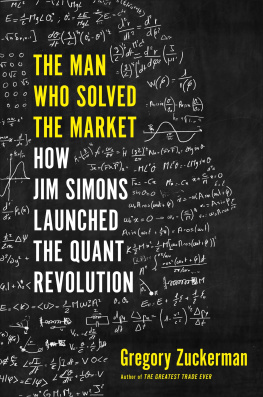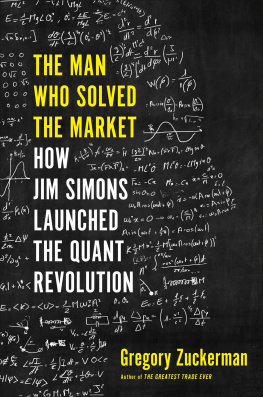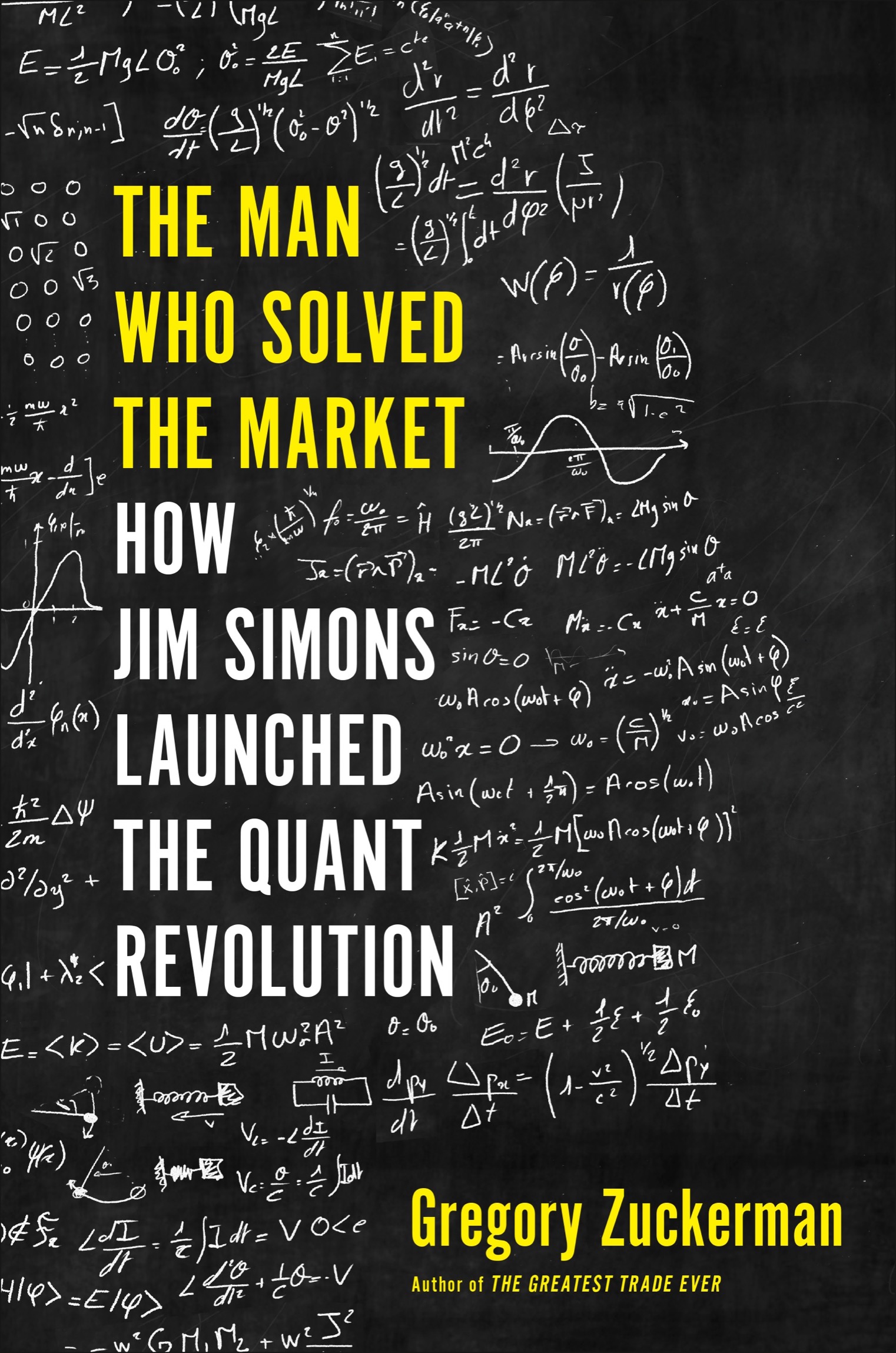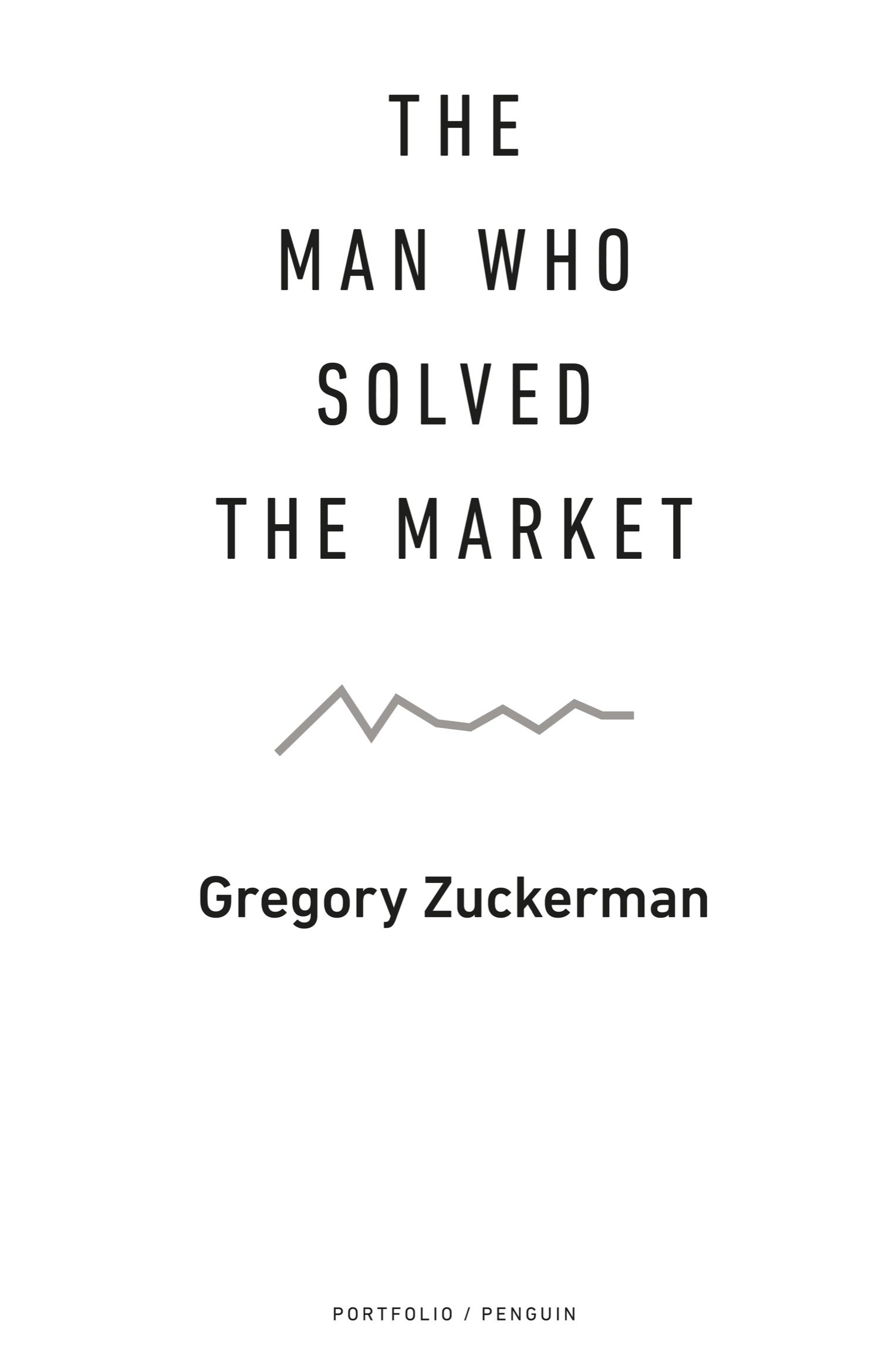ALSO BY GREGORY ZUCKERMAN
For Adult Readers:
The Frackers
The Greatest Trade Ever
For Young Readers:
Rising Above
Rising Above: Inspiring Women in Sports

Portfolio / Penguin
An imprint of Penguin Random House LLC
penguinrandomhouse.com

Copyright 2019 by Gregory Zuckerman
Penguin supports copyright. Copyright fuels creativity, encourages diverse voices, promotes free speech, and creates a vibrant culture. Thank you for buying an authorized edition of this book and for complying with copyright laws by not reproducing, scanning, or distributing any part of it in any form without permission. You are supporting writers and allowing Penguin to continue to publish books for every reader.
Grateful acknowledgment is made for permission to reprint the following photographs:
: Courtesy of Lee Neuwirth Lee Neuwirth
: Courtesy of Seth Rumshinsky
: Photo by Rick Mott, taken at the NJ Open Go Tournament, provided with permission, courtesy of Stefi Baum
: Courtesy of Brian Keating
: Courtesy of David Eisenbud
: Courtesy of Wall Street Journal and Jenny Strasburg
: Patrick McMullan/Getty Images
ISBN 9780735217980 (hardcover)
ISBN 9780735217997 (ebook)
ISBN 9780593086315 (international edition)
Jacket design: Karl Spurzem
Jacket image: (equations) Virtualphoto / Getty Images
Version_2
CONTENTS
To Gabriel and Elijah
My signals in the noise
CAST OF CHARACTERS
James Simons
Mathematician, code breaker, and founder of Renaissance Technologies
Lenny Baum
Simonss first investing partner and author of algorithms that impacted the lives of millions
James Ax
Ran the Medallion fund and developed its first trading models
Sandor Straus
Data guru who played key early role at Renaissance
Elwyn Berlekamp
Game theorist who managed the Medallion fund at a key turning point
Henry Laufer
Mathematician who moved Simonss fund toward short-term trades
Peter Brown
Computer scientist who helped engineer Renaissances key breakthroughs
Robert Mercer
Renaissances co-CEO, helped put Donald Trump in the White House
Rebekah Mercer
Teamed up with Steve Bannon to upend American politics
David Magerman
Computer specialist who tried to stop the Mercers political activities
A TIMELINE OF KEY EVENTS
1938
Jim Simons born
1958
Simons graduates MIT
1964
Simons becomes code breaker at the IDA
1968
Simons leads math department at Stony Brook University
1974
Simons and Chern publish groundbreaking paper
1978
Simons leaves academia to start Monemetrics, a currency trading firm, and a hedge fund called Limroy
1979
Lenny Baum and James Ax join
1982
Firms name changes to Renaissance Technologies Corporation
1984
Baum quits
1985
Ax and Straus move the company to California
1988
Simons shuts down Limroy, launches the Medallion fund
1989
Ax leaves, Elwyn Berlekamp leads Medallion
1990
Berlekamp departs, Simons assumes control of the firm and fund
1992
Henry Laufer becomes full-time employee
1993
Peter Brown and Robert Mercer join
1995
Brown, Mercer achieve key breakthrough
2000
Medallion soars 98.5 percent
2005
Renaissance Institutional Equities Fund launches
2007
Renaissance and other quant firms suffer sudden losses
2010
Brown and Mercer take over firm
2017
Mercer steps down as co-CEO
INTRODUCTION
You do knowno one will speak with you, right?
I was picking at a salad at a fish restaurant in Cambridge, Massachusetts, in early September 2017, trying my best to get a British mathematician named Nick Patterson to open up about his former company, Renaissance Technologies. I wasnt having much luck.
I told Patterson that I wanted to write a book about how James Simons, Renaissances founder, had created the greatest moneymaking machine in financial history. Renaissance generated so much wealth that Simons and his colleagues had begun to wield enormous influence in the worlds of politics, science, education, and philanthropy. Anticipating dramatic societal shifts, Simons harnessed algorithms, computer models, and big data before Mark Zuckerberg and his peers had a chance to finish nursery school.
Patterson wasnt very encouraging. By then, Simons and his representatives had told me they werent going to provide much help, either. Renaissance executives and others close to Simonseven those I once considered friendswouldnt return my calls or emails. Even archrivals begged out of meetings at Simonss request, as if he was a Mafia boss they dared not offend.
Over and over, I was reminded of the iron-clad, thirty-page nondisclosure agreements the firm forced employees to sign, preventing even retirees from divulging much. I got it, guys. But come on. Id been at the Wall Street Journal for a couple of decades; I knew how the game was played. Subjects, even recalcitrant ones, usually come around. After all, who doesnt want a book written about them? Jim Simons and Renaissance Technologies, apparently.
I wasnt entirely shocked. Simons and his team are among the most secretive traders Wall Street has encountered, loath to drop even a hint of how theyd conquered financial markets, lest a competitor seize on any clue. Employees avoid media appearances and steer clear of industry conferences and most public gatherings. Simons once quoted Benjamin, the donkey in Animal Farm, to explain his attitude: God gave me a tail to keep off the flies. But Id rather have had no tail and no flies. Thats kind of the way I feel about publicity.
I looked up from my meal and forced a smile.
This is going to be a battle.
I kept at it, probing defenses, looking for openings. Writing about Simons and learning his secrets became my fixation. The obstacles he put up only added allure to the chase.
There were compelling reasons I was determined to tell Simonss story. A former math professor, Simons is arguably the most successful trader in the history of modern finance. Since 1988, Renaissances flagship Medallion hedge fund has generated average annual returns of 66 percent, racking up trading profits of more than $100 billion (see Appendix 1 for how I arrive at these numbers). No one in the investment world comes close. Warren Buffett, George Soros, Peter Lynch, Steve Cohen, and Ray Dalio all fall short (see Appendix 2).
In recent years, Renaissance has been scoring over $7 billion annually in trading gains. Thats more than the annual revenues of brand-name corporations including Under Armour, Levi Strauss, Hasbro, and Hyatt Hotels. Heres the absurd thingwhile those other companies have tens of thousands of employees, there are just three hundred or so at Renaissance.
















